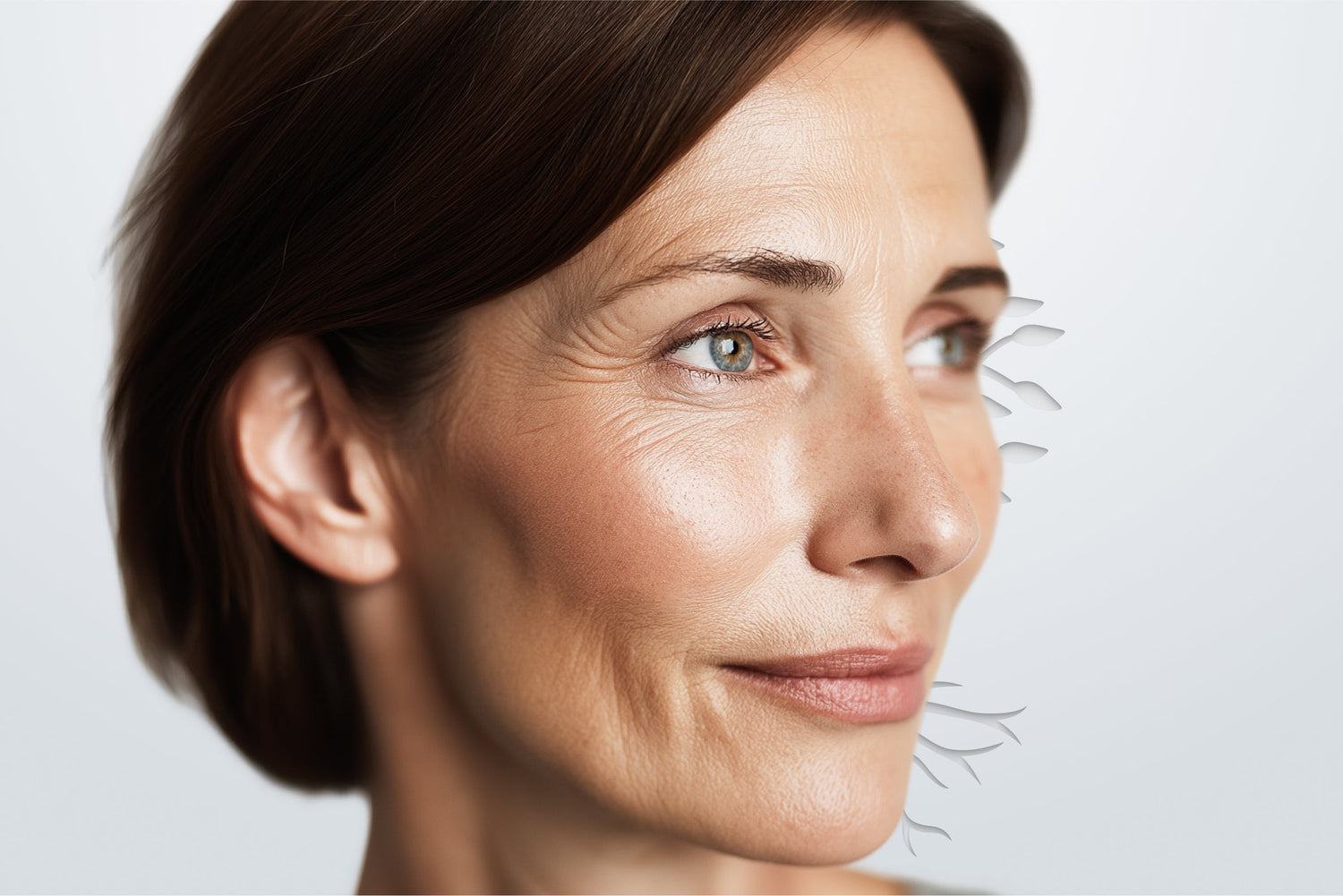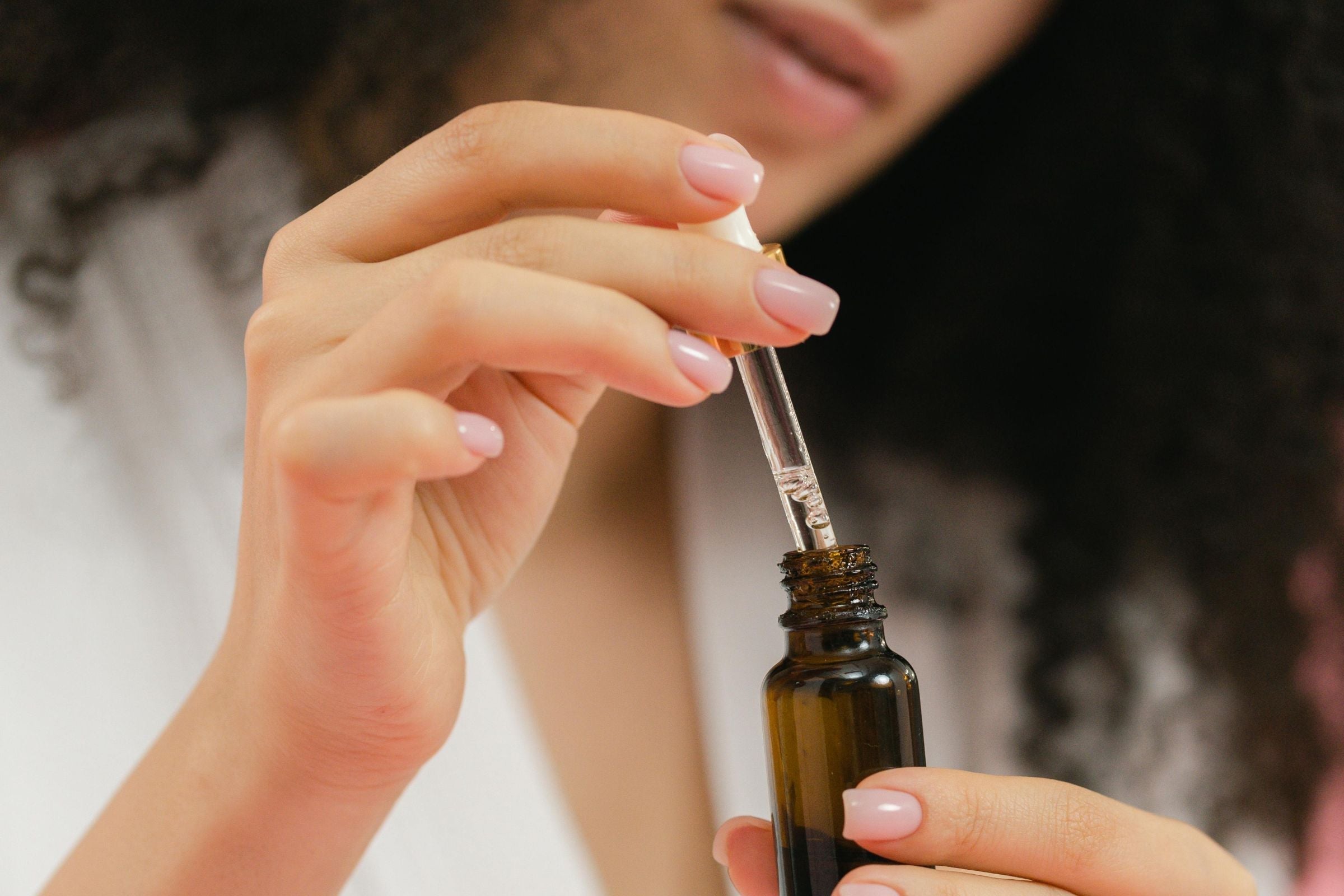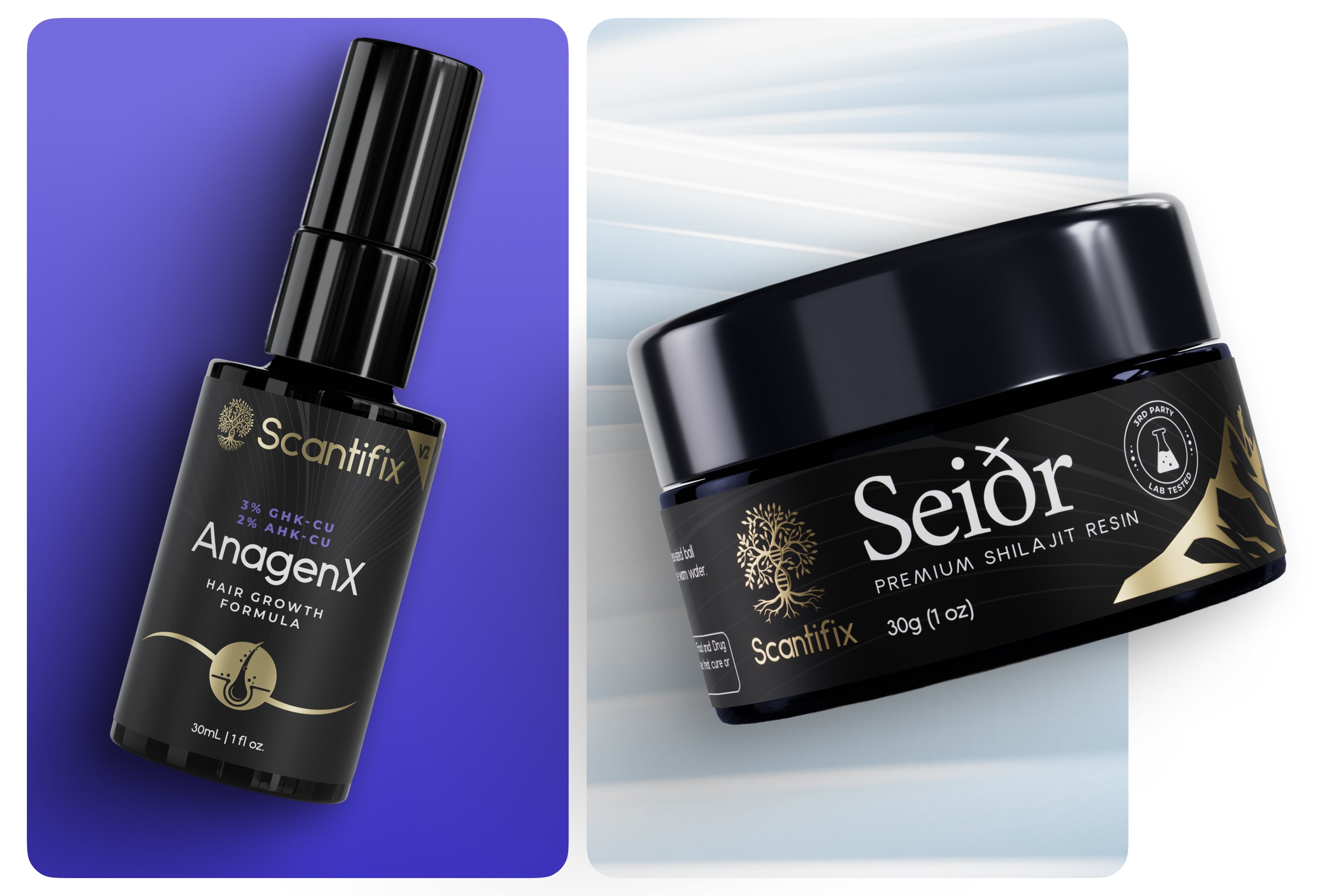Crow’s feet are a common and recognizable sign of skin aging. These fine lines radiate outward from the corners of the eyes and often appear earlier than wrinkles in other areas of the face. While they are a natural result of time, expression, and biology, many people look for ways to prevent or soften their appearance. The good news is that advances in skin science now provide safe, effective strategies that support your skin’s own resilience without having to turn immediately to invasive procedures.
In this guide, we’ll explore what crow’s feet are, why they form, and how you can prevent or minimize them using both daily care and advanced, yet gentle, treatments.
What Are Crow’s Feet?
Crow’s feet are the small creases that fan out from the outer corners of your eyes. Dermatologists often categorize them as expression lines, which are wrinkles that develop through repeated movements, like smiling, squinting, or laughing.
Unlike other areas of the face, the skin around the eyes is especially delicate. It is thinner, contains fewer oil glands, and has less natural fat padding. This makes it more prone to dryness, fine lines, and early signs of aging (Farage et al., 2007). Over time, what starts as faint creases visible only when you smile can evolve into permanent wrinkles that remain even when your face is at rest.
What Causes Crow’s Feet?
The development of crow’s feet is caused by a combination of biological aging, environmental stress, and lifestyle influences:
-
- Repetitive facial movements: Every time you smile or squint, tiny muscles contract around the eyes, folding the skin. With age, these folds become permanent.
- Collagen and elastin loss: From the late twenties onward, the body produces less collagen and elastin—structural proteins that give skin its firmness and bounce (Farage et al., 2007). The thinner the support network beneath the skin, the more easily lines set in.
- UV exposure: Sunlight accelerates collagen breakdown and increases oxidative stress, making the eye area one of the first to show signs of photoaging (Watson et al., 2014).
- Lifestyle factors: Smoking, inadequate sleep, chronic stress, and dehydration all accelerate wrinkle formation.
- Genetics: Some people are simply more prone to early fine lines because of inherited skin thickness, elasticity, or bone structure.
Looking at the variety of causes shows that crow’s feet are nearly universal. But it also reveals a roadmap to the preventative approaches and gentle treatments that can help make a visible difference.
Can You Prevent or Get Rid of Crow’s Feet?
It’s important to be realistic: no topical product or non-invasive treatment can permanently erase crow’s feet. However, research shows that it is possible to:
-
- Delay their formation by protecting skin and supporting collagen.
- Reduce their visibility with consistent use of peptides, hydration, and targeted therapies.
- Prevent progression so that fine lines remain faint instead of deepening into permanent creases.
Invasive procedures like injections, lasers, or chemical peels can achieve faster results, but they come with greater risk, downtime, and potential side effects. For many people, the best starting point is a gentler, biologically guided approach. One that supports the skin’s own repair and renewal systems through advanced peptides, non-invasive tools, and protective habits.
Gentle, Non-Invasive Approaches
Topical Peptides
Several topical peptides have been studied specifically for their ability to minimize wrinkles and crow’s feet:
-
- Argireline: Mimics part of the SNAP-25 protein, reducing muscle contractions that cause expression lines. Clinical studies show nearly 49% wrinkle depth reduction around the eyes in four weeks of consistent use (Wang et al., 2013).
- SNAP-8: a next-generation peptide that builds on Argireline’s muscle-relaxing mechanism. Studies confirm its ability to reduce dynamic wrinkles, including around the eyes, by interfering with neurotransmitter release to facial muscles while achieving results without injectables (Shin et al.,2024; Nguyen et al., 2024).
- Leuphasyl: Works on the muscle side of the process, encouraging relaxation and reducing mechanical stress on the skin (Griffiths & Watson, 2023).
- Syn-Coll: Stimulates fibroblasts to boost collagen production and also helps prevent collagen breakdown, improving firmness and elasticity (Trookman et al., 2009).
Together, these peptides provide a powerful alternative to more invasive treatments by working at multiple stages of the wrinkle formation process. With consistent use, they help soften existing lines, reduce the intensity of new ones, and smooth skin while preserving natural facial movement and expression—avoiding the frozen look sometimes associated with injectables.
Microneedling and Nanoneedling
Microneedling works by creating controlled micro-channels in the skin, triggering collagen production and enhancing absorption of active ingredients. For crow’s feet, nanoneedling is especially valuable.
Nanoneedling uses ultra-fine tips that penetrate only the uppermost layer of skin (around 0.15 mm). This makes it suitable for delicate eye-area tissue while still stimulating repair and improving the delivery of peptides and hydrators. Studies confirm that nanoneedling is effective for fine lines around the eyes with minimal risk of irritation or downtime (Singh & Yadav, 2016).
Advances in skincare technology now make it easier and more convenient to treat skin concerns like crow's feet. High quality at-home devices offering advanced features such as customizable microneedling and nanoneedling modes, serum infusion and EMS (Electrical Muscle Stimulation) that enhance results.
Red Light Therapy
Red light therapy (RLT) uses wavelengths between 600–850 nm to penetrate skin and stimulate mitochondrial activity. By boosting cellular energy, it improves collagen production, circulation, and overall skin vitality.
Clinical studies have shown that red light therapy increases collagen, elastin, and hyaluronic acid levels in skin while reducing pro-inflammatory markers. Around the eyes, this translates to firmer texture and less visible fine lines over time (Kim et al., 2019).
Similar to microneedling devices, it's no longer necessary to visit a clinic for professional level results. Premium red light therapy masks deliver consistent, full-coverage treatment that supports smoother, stronger skin without downtime or irritation.
Moisturizing and Hydration
Dehydration exaggerates fine lines, making crow’s feet appear deeper than they are (Choi et al., 2013). Daily use of a hydrating base such as hyaluronic acid, glycerin, or barrier-supportive moisturizers helps plump the skin and improve resilience.
Supporting hydration is especially important when using peptides or after treatments like microneedling, as it gives skin the environment it needs to rebuild effectively.
UV Protection
The sun is one of the fastest accelerators of crow’s feet. Sunglasses and wide-brimmed hats provide mechanical protection and prevent squinting, which itself contributes to wrinkle formation. Add an extra layer of protection by using a clean, broad-spectrum, mineral-based sunscreen (SPF 30 or higher).
More Invasive, Clinical Approaches
Some people turn to more aggressive clinical procedures for crow’s feet, but these often come with greater risks and tradeoffs compared to gentler, biologically supportive options:
-
- Botulinum toxin injections: Temporarily paralyze small muscles around the eyes to reduce lines. While effective, results fade in a few months, requiring repeat sessions. Side effects can include asymmetry or a stiff, “frozen” look.
- Chemical peels: Remove outer skin layers to stimulate renewal, but may cause irritation, uneven pigmentation, or sensitivity in the delicate eye area.
- Laser resurfacing: Stimulates deeper collagen repair, but involves notable downtime, expense, and risks of complications.
These treatments may bring faster results, but they come at the cost of higher risks, longer recovery, and less natural alignment with your skin’s own repair processes. For many, starting with gentler strategies offers safer, more sustainable benefits.
Lifestyle and Prevention Habits
Topical treatments go further when paired with supportive daily habits:
-
- Sleep: Adequate rest enhances skin repair and prevents dark circles and puffiness that emphasize wrinkles.
- Nutrition: Diets rich in antioxidants (vitamins C, E, polyphenols) help neutralize oxidative stress that accelerates collagen breakdown.
- Hydration: Drinking enough water supports skin’s elasticity and plumpness.
- Avoid smoking and excess alcohol: Both accelerate collagen loss and skin aging.
- Stress management: High cortisol interferes with skin repair and barrier function (Maarouf et al., 2019).
By combining these daily habits with targeted treatments, you create a stronger foundation for your skin. This allows you to build a smart routine around the eyes that maximizes protection and repair.
Final Thoughts
Crow’s feet are a natural part of aging, but that doesn’t mean you’re powerless against them. By understanding what causes them and choosing gentle, science-backed strategies, you can prevent deeper lines and maintain smoother, more resilient skin.
Peptides, nanoneedling, and red light therapy offer effective, low-risk options that align with your skin’s own biology. When paired with daily sun protection, hydration, and healthy habits, they form a comprehensive approach to caring for the delicate eye area.
Our goal at Scantifix is to provide peptides and tools you can trust, so you can care for your skin in a way that feels natural and effective. Healthier, smoother skin is most often the result of small, consistent steps supported by good science.
Resources:
Choi, J. W., Kwon, S. H., Huh, C. H., & Park, K. C. (2013). The influences of skin visco-elasticity, hydration level and aging on the formation of wrinkles: A comprehensive and objective approach. Skin Research and Technology, 19(1), e349–e355. https://doi.org/10.1111/j.1600-0846.2012.00650.x
Farage, M. A., Miller, K. W., & Elsner, P. (2007). Structural characteristics of the aging skin: A review. Cutaneous and Ocular Toxicology, 26(4), 343–357. https://doi.org/10.1080/15569520701622951
Griffiths, T. W., Watson, R. E. B., & Langton, A. (2023). Skin ageing and topical rejuvenation strategies. British Journal of Dermatology, 189(Supplement_1), i17. https://doi.org/10.1093/bjd/ljad282
Kim, B., Mukherjee, A., Seo, S., Ali, F., Southall, M., & Parsa, R. (2019). Low-level red and infrared light increases expression of collagen, elastin, and hyaluronic acid in skin. Journal of the American Academy of Dermatology, 81(4), AB434. https://doi.org/10.1016/j.jaad.2019.10.089
Maarouf, M., Maarouf, C. L., & Yosipovitch, G. (2019). The impact of stress on epidermal barrier function: An evidence-based review. British Journal of Dermatology, 181(6), 1129–1137. https://doi.org/10.1111/bjd.17605
Nguyen, T. T. M., Yi, E. J., Jin, X., Zheng, Q., Park, S. J., & Yi, G. S. (2024). Sustainable dynamic wrinkle efficacy: Non-invasive peptides as the future of Botox alternatives. Cosmetics, 11(4), 118. https://www.mdpi.com/2079-9284/11/4/118
Shin, J. Y., Han, D. H., Yoon, K. Y., & Jeong, D. H. (2024). Clinical safety and efficacy evaluation of a dissolving microneedle patch having dual anti-wrinkle effects with safe and long-term activities. Annals of Dermatology. https://pmc.ncbi.nlm.nih.gov/articles/PMC11291098/
Singh, A., & Yadav, S. (2016). Microneedling: Advances and widening horizons. Indian Dermatology Online Journal, 7(4), 244-254. https://doi.org/10.4103/2229-5178.185468
Trookman, N. S., Rizer, R. L., Ford, R., Ho, E., & Gotz, V. (2009). Immediate and long-term clinical benefits of a topical treatment for facial lines and wrinkles. Journal of Clinical Aesthetic Dermatology, 2, 38–43.
Wang, Y., Wang, M., Xiao, S., Pan, P., Li, P., & Huo, J. (2013). The anti-wrinkle efficacy of Argireline, a synthetic hexapeptide, in Chinese subjects. American Journal of Clinical Dermatology, 14(4), 277–284. https://doi.org/10.1007/s40257-013-0009-9
Watson, R. E. B., Gibbs, N. K., & Griffiths, C. E. M. (2014). Damage to skin extracellular matrix induced by UV exposure. Antioxidants & Redox Signaling, 21(7), 1063–1077. https://doi.org/10.1089/ars.2013.5653






Leave a comment
All comments are moderated before being published.
This site is protected by hCaptcha and the hCaptcha Privacy Policy and Terms of Service apply.